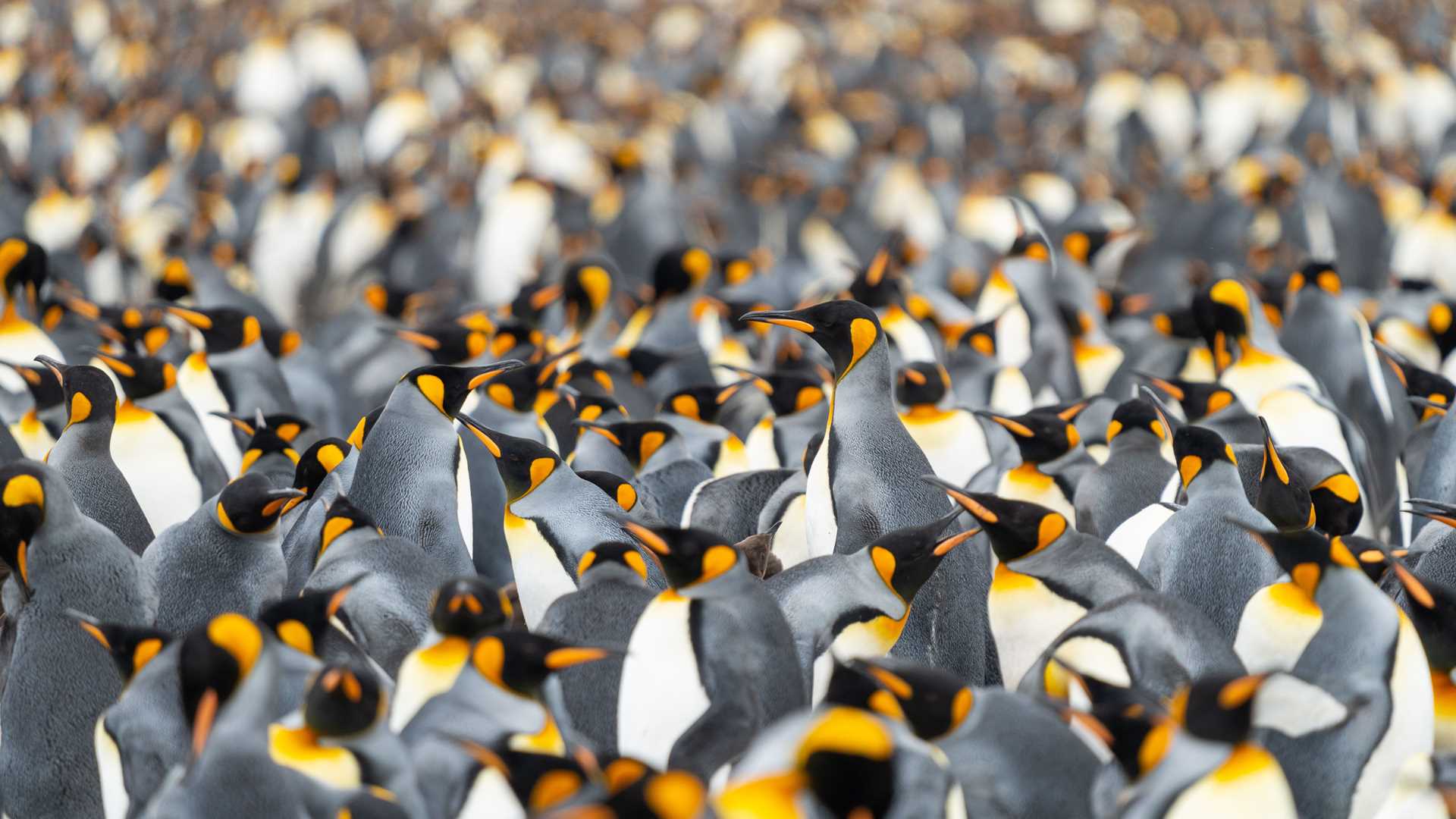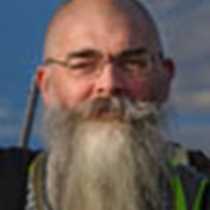Can your senses be overloaded to the extent that you simply cry from the utter confusion of sight, smell, hearing, taste even? Yes, this is possible, and for many of us it happened this morning. It must be added that an overwhelming sense of utter joy joined the melee in our brains as we landed at Salisbury Plain.
For many of us, seeing a large king penguin colony was one of our reasons for coming to South Georgia, and we were not disappointed today. The wide, sweeping Bay of Isles is home to perhaps 100,000 pairs of king penguins. Together with their chicks, there are approximately 300,000 birds. In this recently deglaciated bay, plenty of space is available for king penguins, fur seals, and elephant seals to breed and spend the year. The sea doesn't freeze in the winter, and the animals are free to come and go as they please.
Expedition leader Lucho led the scout, heading out before breakfast to check the landing to see if it would be possible to run an operation. The report back was great – we could land in front of the colony, which is extremely unusual. National Geographic Explorer settled into its routine of unloading staff and then guests to visit the site deep in the bay. An occasional wandering or light-mantled sooty albatross took off from the small islands of Prion and Petrel in the distance.
A flat sea and calm winds afforded us the opportunity to spend a few hours ashore. Walking along the bay, we arrived at a small viewpoint where naturalists Jonny and Ben established a position to view the bulk of the colony, which rose to the south and into the hills. The noise was incredible, and the sights were amazing. The smell…well, that was interesting, and all the while, we could taste the rich iodine and seaweed of the beach. Many stood with a tear in the eye.
After lunch, a short relocation took us to Prince Olav Harbour in Cook Bay. This site is thought to have been the first place that the British Captain James Cook found when he arrived on the mainland of South Georgia before moving to Possession Bay to claim the island for King George III.
In the early 20th century, a small, ship-based whaling operation was established here by a Norwegian company. The company was named after Prince Olav. Later, in 1916, a land-based operation grew. It only lasted for a short time – some 15 years – and yet the buildings that rise from the shoreline into the hills appear to be in remarkable shape.
A sad wreck rested on the beach. Now covered in tussock grass, Antarctic terns, and cormorants, the Brutus was once a coal store brought to shore from the Falklands, where similar vessels served as warehouses. Once proud ships that sailed around the Horn, many limped into the Falklands where they were either wrecked or salvaged and used as floating stores. A quiet lagoon of flat, calm waters afforded us one last view of the fur seal pups whose plaintive cries filled the air, their sheer numbers boiling the water as they ducked and dove around our Zodiacs. It was with another tear in our eyes that we made our way back to the ship, waving goodbye to this, the world’s most wonderful island.







